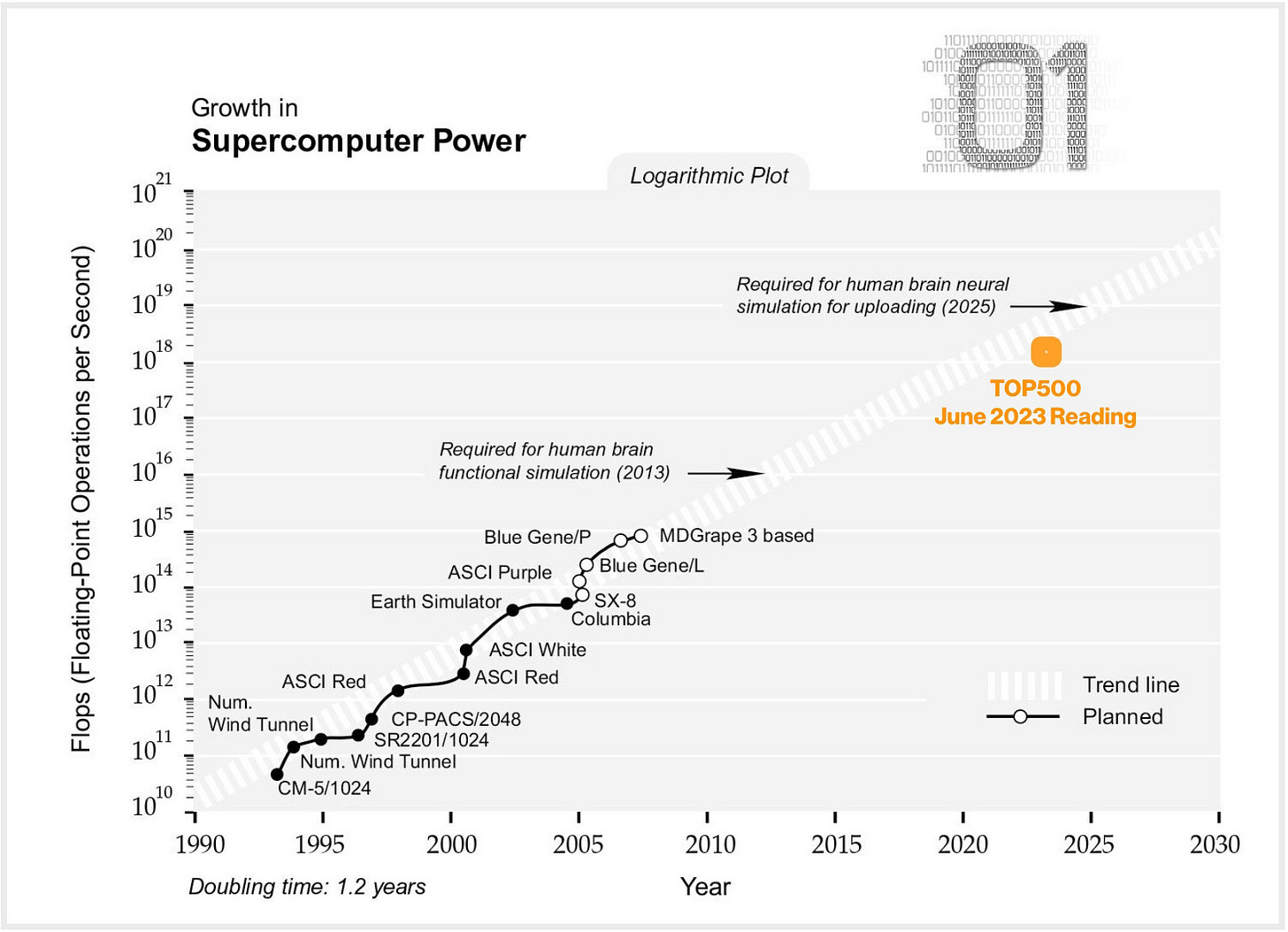Fission Chips
How artificial intelligence could disrupt the energy market.
“Computer science is no more about computers than astronomy is about telescopes.” – Edsger Dijkstra
Ray Kurzweil’s bestselling 2005 book, The Singularity is Near: When Humans Transcend Biology, quickly became a cult classic among techno-optimists. The essence of Kurzweil’s argument is that exponentially rapid advances in computing power, nanotechnology, artificial intelligence (AI), and biotechnology will converge to a point where human and machine intelligence merge, resulting in a transformative event he popularized as The Singularity. The doubling time of technology has shrunk from centuries to decades to years, and at some point, in most reader’s lifetimes, so Kurzweil posits, that doubling time will be less than a day.
By the end of the opening chapter, one feels an irresistible impulse to put the book down, go outside for a long walk, and ponder what it means to be human.
Nearly two decades on from the book’s original publication, reality has unfolded against some of Kurzweil’s predictions in fascinating ways. Consider his forecasted growth in supercomputing power relative to the most recent readings on the TOP500 project’s bi-annual list of the world’s fastest supercomputers. The next update is set to be published in the coming days—we expect a new record to be established.
Much to Kurzweil’s credit, the back third of his book consists of a detailed response to the many critiques of his provocative ideas. The most common argument against the sustained exponential growth of technology—and the first Kurzweil confronts in this section of the book—amounts to a Malthusian belief that there will not be enough energy to power all these computers. Here’s how Kurzweil summarizes their position:
“It’s a mistake to extrapolate exponential trends indefinitely, since they inevitably run out of resources to maintain the exponential growth. Moreover, we won’t have enough energy to power the extraordinarily dense computational platforms forecast, and even if we did they would be as hot as the sun.”
To which he responds:
“Exponential trends do reach an asymptote, but the matter and energy resources needed for computation and communication are so small per compute and per bit that these trends can continue to the point where nonbiological intelligence is trillions of trillions of times more powerful than biological intelligence. Reversible computing can reduce energy requirements, as well as heat dissipation, by many orders of magnitude. Even restricting computation to ‘cold’ computers will achieve nonbiological computing platforms that vastly outperform biological intelligence.”
Kurzweil’s expectation that computer scientists would find ways to circumvent energy constraints seems to have been borne out. The TOP500 Project also publishes the GREEN500 list, which sorts the supercomputers on the TOP500 list in terms of energy efficiency (as measured in GigaFLOPS per watt of power consumed). In the decade since such data has been tracked, the winning supercomputer has become nearly 22 times more efficient:
With the widespread deployment of large language models (LLMs) like ChatGPT, an explosion of interest in and support for the development of AI technologies has consumed Wall Street. While many are quick to malign recent market action as just another bubble—and there are undoubtedly signs of significant excesses—we would be hesitant to dismiss investor excitement over AI as simply a fad to be faded. Viewed through a Kurzweilian lens, the proliferation of AI is predictably well-timed fuel for the next exponential leap in computing power, driving a synergistic feedback loop of technology development.
While many environmentalists are raising alarm about the carbon footprint associated with AI technologies, we suspect they will be powerless to do much to stop these developments. A useful way to model the economy is to assume society will do whatever it takes to stay on the Kurzweilian path of exponentially increasing computing power, regardless of the financial or energetic barriers that manifest. What does this framework imply for the future of energy development? How will the need to power global computing shape the future of renewable energy, nuclear technology, and the development of associated technologies? Let’s fire up the Doomberg supercomputer and find out.



